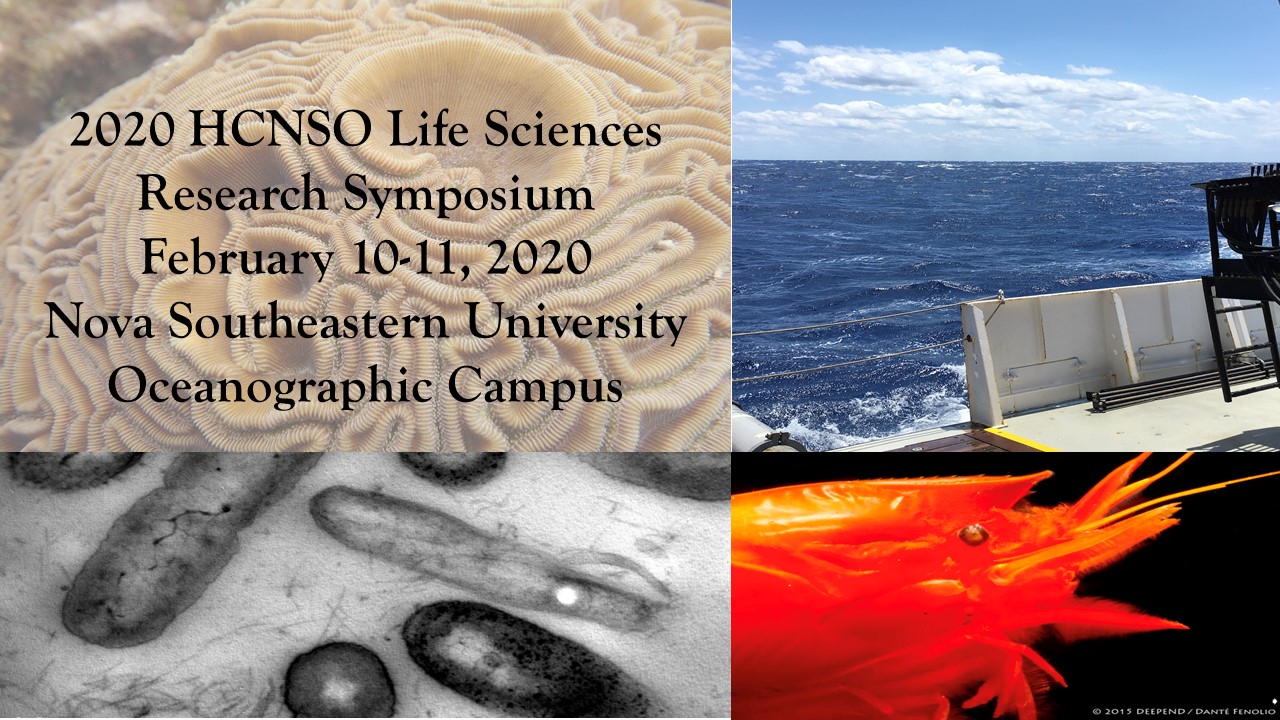Uncovering the Source of Bioluminescence in the Pyrosome, Pyrosoma atlanticum
Location
HCNSO Guy Harvey Oceanographic Center Nova Southeastern University
Start
2-11-2020 4:15 PM
End
2-11-2020 4:30 PM
Type of Presentation
Oral Presentation
Abstract
The pelagic tunicate, Pyrosoma atlanticum, has been observed since the 1840s and can be found in tropical and temperate waters ranging from 45°N to 45°S. This tunicate is known for its brilliant bioluminescence. This study is aiming to characterize the bacterial symbionts believed to be responsible for the luminescence using various methods such as electron microscopy, light microscopy, and molecular genetics. The bacteria are likely localized within a specific organ. The putative bioluminescent bacteria have been identified and characterized by utilizing genetics methodologies. Specifically, 16S rRNA and whole-genome sequencing have been applied to microbiome comparisons to identify the bacterial symbionts. Bacteria have been found within Pyrosoma atlanticum, with both 16S rRNA sequencing and scanning and transmission electron microscopy (SEM, TEM respectively) examination confirming bacterial presence in the light organ. After comparing within the Silva rRNA database, Photobacterium sp. R33 dominated as one of the most relatively abundant bacteria within pyrosome samples. Photobacterium is known as one of three luminescent genera in the family Vibrionaceae. TEM images show the microbes are distributed intracellularly within the luminous organ of the host cell. This intracellular bacteria localization differs from the distribution in other bioluminescent organisms, in which the bacteria are extracellular. Efforts were also made to apply laser capture microdissection to isolate the luminous organ with bacterial communities intact. In the future, deeper high throughput sequencing may provide specific probes for fluorescence in situ hybridization (FISH), which can verify the specific symbionts’ location in the tunicate.
Uncovering the Source of Bioluminescence in the Pyrosome, Pyrosoma atlanticum
HCNSO Guy Harvey Oceanographic Center Nova Southeastern University
The pelagic tunicate, Pyrosoma atlanticum, has been observed since the 1840s and can be found in tropical and temperate waters ranging from 45°N to 45°S. This tunicate is known for its brilliant bioluminescence. This study is aiming to characterize the bacterial symbionts believed to be responsible for the luminescence using various methods such as electron microscopy, light microscopy, and molecular genetics. The bacteria are likely localized within a specific organ. The putative bioluminescent bacteria have been identified and characterized by utilizing genetics methodologies. Specifically, 16S rRNA and whole-genome sequencing have been applied to microbiome comparisons to identify the bacterial symbionts. Bacteria have been found within Pyrosoma atlanticum, with both 16S rRNA sequencing and scanning and transmission electron microscopy (SEM, TEM respectively) examination confirming bacterial presence in the light organ. After comparing within the Silva rRNA database, Photobacterium sp. R33 dominated as one of the most relatively abundant bacteria within pyrosome samples. Photobacterium is known as one of three luminescent genera in the family Vibrionaceae. TEM images show the microbes are distributed intracellularly within the luminous organ of the host cell. This intracellular bacteria localization differs from the distribution in other bioluminescent organisms, in which the bacteria are extracellular. Efforts were also made to apply laser capture microdissection to isolate the luminous organ with bacterial communities intact. In the future, deeper high throughput sequencing may provide specific probes for fluorescence in situ hybridization (FISH), which can verify the specific symbionts’ location in the tunicate.


